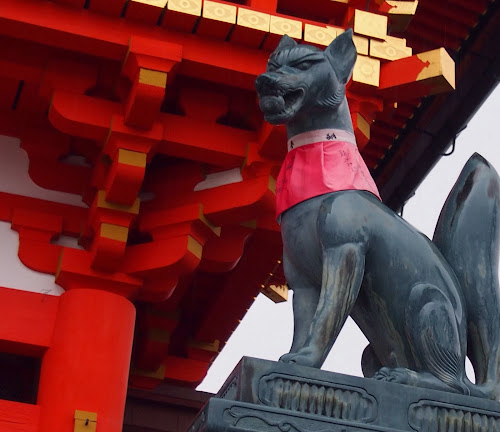It starts just a few steps from the Inari train station, a series of Torii or gates that define a boundary between profane and sacred space. But here there are thousands upon thousands of them up into the mountain. It feels like an almost infinite transition into ever more sacred space, with what seem to be thousands of small shrines just off the main paths on the mountain slopes leading upwards.
It began pouring rain almost as soon as we disembarked from the train. Although it did dissuade us from going all the way to the inner shrine atop Inari mountain, it likely helped us to avoid larger crowds at this popular shrine. It also gave us photographers a chance to capture those kimono-clad tourists carrying umbrellas.
We couldn’t help but recall walking through The Gates, the Cristo installation in New York’s Central Park, a number of years back with our friend Aidi from Hong Kong. The shrine at Inari was, of course, his visual reference. As inspiring an experience as that was, it was a mere abstraction of the incredibly rich experience of walking through more than a millennium of Shinto devotion. Since the 8th century people have been building structures here to honor the patron of rice and of business. The foxes or kitsune are the messengers of Inari and they are everywhere, many with satchels of rice or keys to the granary in their mouths.












